

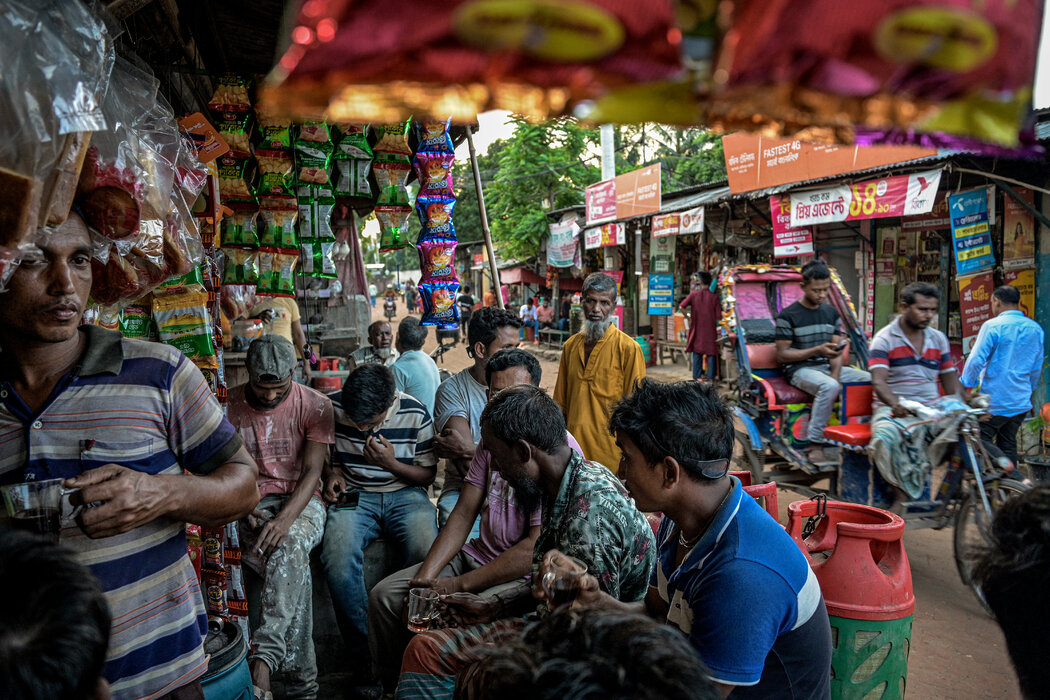
For more than half a century, the handbook for how developing countries can grow rich hasn’t changed much: Move subsistence farmers into manufacturing jobs, and then sell what they produce to the rest of the world.
半个多世纪以来,发展中国家实现发展致富的指南没有太大的变化:将自给自足的农民转移到制造业,然后把他们生产的产品销售到世界其他地方。
The recipe — customized in varying ways by Hong Kong, Singapore, South Korea, Taiwan and China — has produced the most potent engine the world has ever known for generating economic growth. It has helped lift hundreds of millions of people out of poverty, create jobs and raise standards of living.
这套方法在香港、新加坡、韩国、台湾和中国以当地不同的方式定制,产生了全球有史以来最强有力的经济增长引擎,帮助数以亿计的人摆脱了贫困,创造了就业机会,提高了生活水平。
The Asian Tigers and China succeeded by combining vast pools of cheap labor with access to international know-how and financing, and buyers that reached from Kalamazoo to Kuala Lumpur. Governments provided the scaffolding: They built up roads and schools, offered business-friendly rules and incentives, developed capable administrative institutions and nurtured incipient industries.
亚洲四小龙和中国的成功靠的是,将大量廉价劳动力、国际技术和融资渠道,以及从卡拉马祖到吉隆坡的买家结合起来。政府提供支撑:修建道路和学校,提供有利于商业的规则和激励措施,建立有能力的行政机构,培育新兴产业。
But technology is advancing, supply chains are shifting, and political tensions are reshaping trade patterns. And with that, doubts are growing about whether industrialization can still deliver the miracle growth it once did. For developing countries, which contain 85 percent of the globe’s population — 6.8 billion people — the implications are profound.
但技术在进步,供应链在转移,政治紧张局势正在重塑贸易模式。因此,人们越来越怀疑工业化是否还能带来曾经的增长奇迹。对总人口为68亿、占全球人口85%的发展中国家来说,其影响是深远的。
Today, manufacturing accounts for a smaller share of the world’s output, and China already does more than a third of it. At the same time, more emerging countries are selling inexpensive goods abroad, increasing competition. There are not as many gains to be squeezed out: Not everyone can be a net exporter or offer the world’s lowest wages and overhead.
如今,制造业在全球产出中占的份额比以前小,而中国的制造业已占全球的三分之一以上。与此同时,越来越多的新兴国家向海外销售廉价商品,加剧了制造业的竞争,已经没有那么多油水可榨:不是每个国家都能成为净出口国、或提供世界上最低的工资和营运费用。
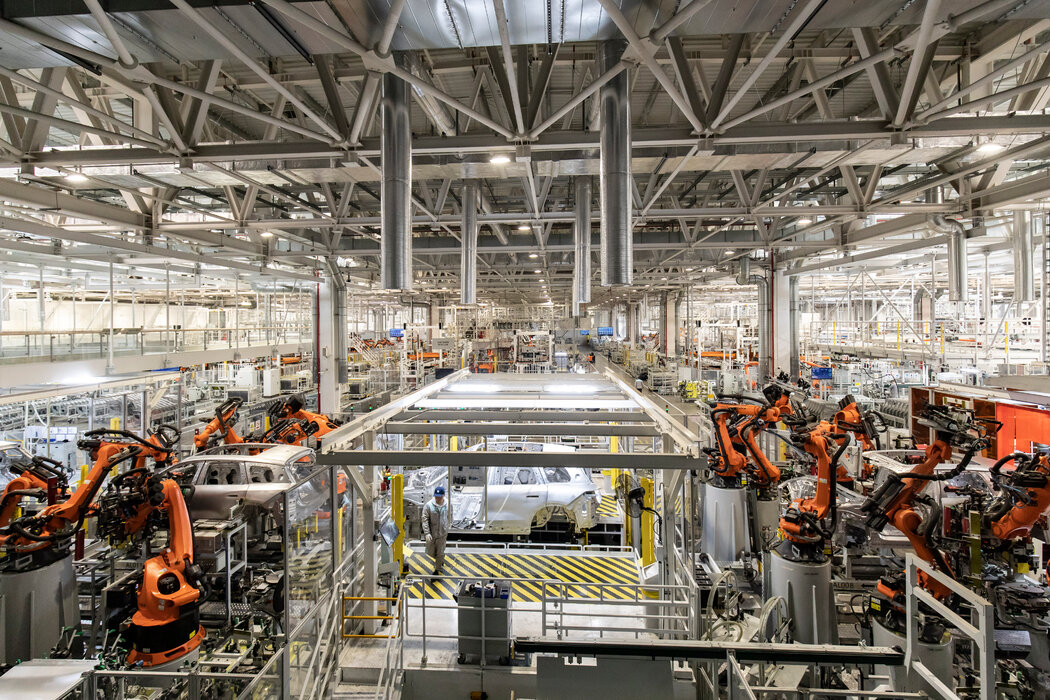
There are doubts that industrialization can create the game-changing benefits it did in the past. Factories today tend to rely more on automated technology and less on cheapworkers who have little training.
人们怀疑,工业化能否创造以前那种益处,从而彻底改变事态。如今的工厂往往更多依赖自动化技术,而不是未经培训的廉价工人。
“You cannot generate enough jobs for the vast majority of workers who are not very educated,” said Dani Rodrik, a leading development economist at Harvard.
“你无法为绝大多数受教育程度低的工人创造足够多的就业机会,”哈佛大学著名发展经济学专家丹尼·罗德里克说。
The process can be seen in Bangladesh, which the World Bank’s managing director called “one of the world’s greatest development stories” last year. The country built its success on turning farmers into textile workers.
这个过程在孟加拉国可以看到,世界银行高级常务副行长去年称该国是“世界上最伟大的发展故事之一”。该国通过把农民变成纺织工人取得了成功。
Last year, though, Rubana Huq, chair of Mohammadi Group, a family-owned conglomerate, replaced 3,000 employees with automated jacquard machines to do complex weaving patterns.
不过,去年,家族企业集团莫哈马迪集团董事长卢巴纳·哈克用自动化提花机取代了3000名工人,制作复杂的纺织图案。
The women found similar jobs elsewhere in the company. “But what follows when this happens on a large scale?” asked Ms. Huq, who is also president of the Bangladesh Garment Manufacturers and Exporters Association.
被取代的女工在公司其他部门找到了类似的工作。“但是,当这种情况大规模发生时又会怎么样呢?”身兼孟加拉国服装制造商和出口商协会主席的哈克问道。
These workers don’t have training, she said. “They’re not going to turn into coders overnight.”
这些工人没有受过训练,她说。“她们不能在一夜之间变成程序员。”
Recent global developments have accelerated the transition.
最近的全球事态发展加速了这种转变。
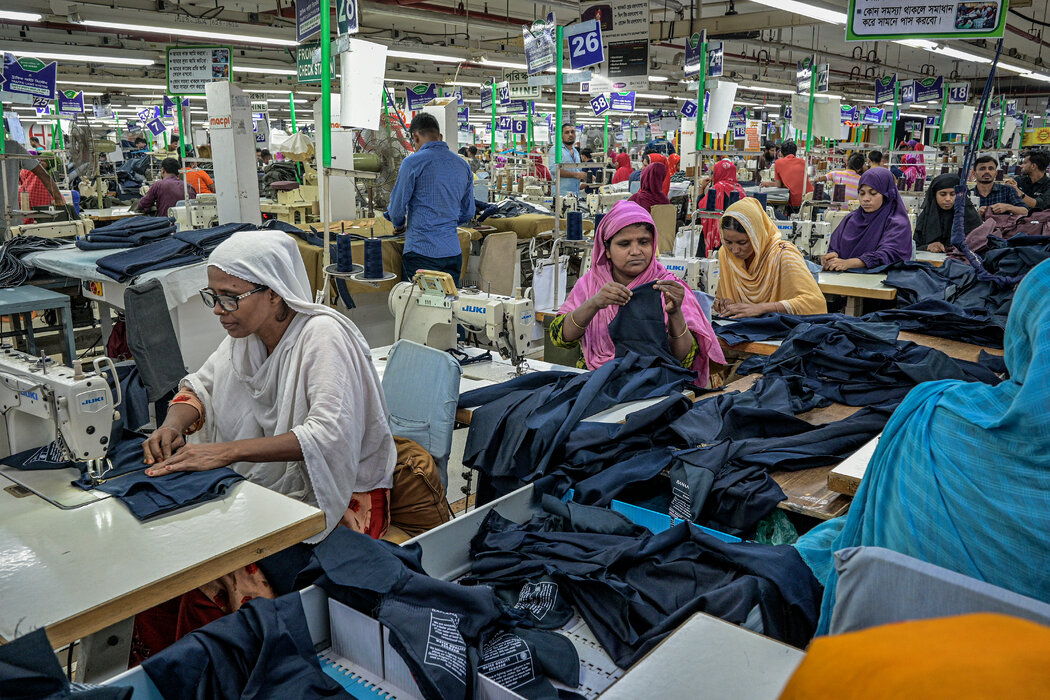
Supply chain meltdowns related to the Covid-19 pandemic and to sanctions prompted by Russia’s invasion of Ukraine drove up the price of essentials like food and fuel, biting into incomes. High interest rates, imposed by central banks to quell inflation, set off another series of crises: Developing nations’ debts ballooned, and investment capital dried up.
供应链受新冠病毒大流行,以及俄罗斯入侵乌克兰引发的制裁影响,出现了崩溃,导致食品和燃料等必需品的价格升高,给收入带来了不良影响。各国央行为抑制通货膨胀而提高利率,引发了又一串危机:发展中国家债务激增,用于投资的资本枯竭。
Last week, the International Monetary Fund warned of the noxious combination of lower growth and higher debt.
上周,国际货币基金组织对增长放缓和债务上升的有害组合发出了警告。
The supercharged globalization that had encouraged companies to buy and sell in every spot around the planet has also been shifting. Rising political tensions, especially between China and the United States, are affecting where businesses and governments invest and trade.
全球化的迅猛发展鼓励企业在全球各地进行采购和销售,但这种趋势也在发生变化。不断增长的政治紧张局势,尤其是美中之间的紧张局势,正在影响企业和政府的投资及贸易地点。
Companies want supply chains to be secure as well as cheap, and they are looking at neighbors or political allies to provide them.
企业希望供应链既安全又廉价,它们正在邻国或政治盟友那里寻找供应商。
In this new era, Mr. Rodrik said, “the industrialization model — which practically every country that has become rich has relied on — is no longer capable of generating rapid and sustained economic growth.”
罗德里克说,在这个新时代,“几乎每个已经富裕的国家都曾依赖的工业化模式已不再能够带来快速、持续的经济增长。”
Nor is it clear what might replace it.
也不清楚什么能够取代它。
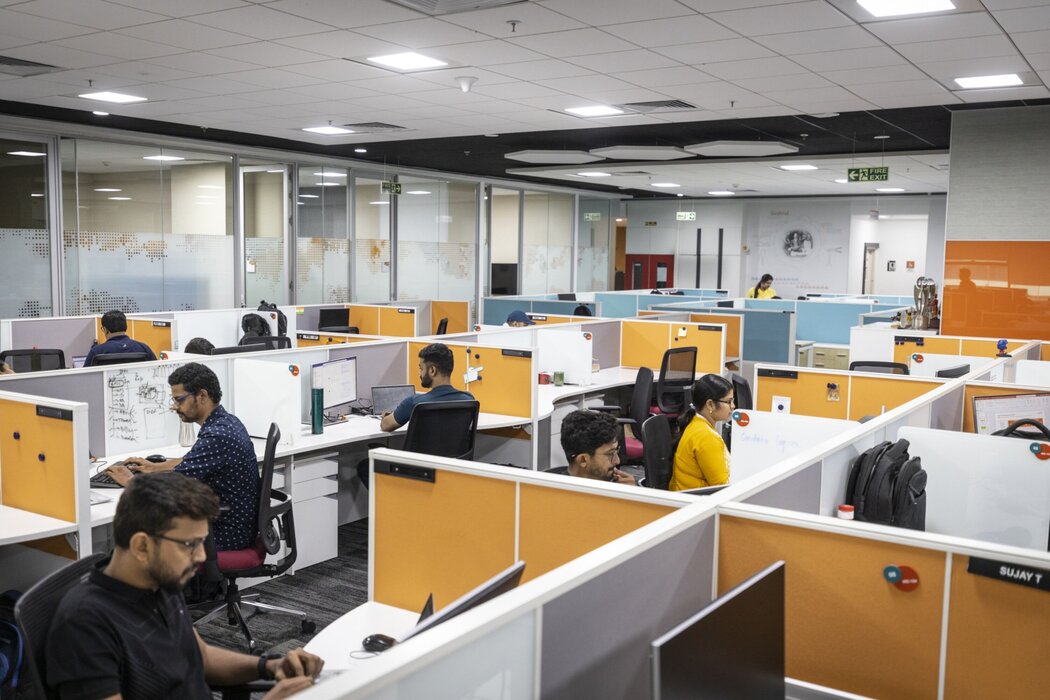
There’s a future in service jobs.
服务业工作大有前途。
One alternative might be found in Bengaluru, a high-tech center in the Indian state of Karnataka.
班加罗尔是印度卡纳塔克邦的一个高科技中心,这里可能带来另一种选择。
Multinationals like Goldman Sachs, Victoria’s Secret and the Economist magazine have flocked to the city and set up hundreds of operational hubs — known as global capability centers — to handle accounting, design products, develop cybersecurity systems and artificial intelligence, and more.
高盛、维多利亚的秘密、《经济学人》杂志等跨国公司纷纷涌入这座城市,设立了数以百计的营运中心——被称为全球能力中心——处理会计事务、产品设计、网络安全系统研发,以及人工智能等工作。
Such centers are expected to generate 500,000 jobs nationwide in the next two to three years, according to the consulting firm Deloitte.
据咨询公司德勤,这些中心预计将在未来两到三年,为印度全国提供50万个就业岗位。
They are joining hundreds of biotech, engineering and information technology companies including homegrown giants like Tata Consultancy Services, Wipro and Infosys Limited. Four months ago, the American chip company AMD unveiled its largest global design center there.
这些中心正在加入到数百家生物技术、工程和信息技术公司的行列,包括本土巨头塔塔咨询服务、Wipro和印孚瑟斯有限公司在内。四个月前,美国芯片公司AMD在这里启用了它全球最大的设计中心。
“We have to move away from the idea of classic development stages, that you go from the farm to the factory and then from the factory to offices,” said Richard Baldwin, an economist at the International Institute for Management Development in Lausanne. “That whole development model is wrong.”
“我们必须改变经典发展阶段的观念,即从农场到工厂,再从工厂到办公室,”总部在瑞士洛桑的国际管理发展研究院的经济学家理查德·鲍德温说。“那一整套发展模式是错误的。”
Two-thirds of the world’s output now comes from the service sector — a mishmash that includes dog walkers, manicurists, food preparers, cleaners and drivers, as well as highly trained chip designers, graphic artists, nurses, engineers and accountants.
目前,全球三分之二的产出来自服务业。这是个包罗万象的行业,从业者包括遛狗者、美甲师、食品准备者、清洁工和司机,以及芯片设计师、平面设计师、护士、工程师和会计师等受过专业训练的人。
It is possible to leapfrog to the service sector and grow by selling to businesses around the world, Mr. Baldwin argued. That is what helped India become the world’s fifth-largest economy.
鲍德温认为,有可能直接跨越到服务业,并通过向世界各地的企业提供服务来实现增长。这就是印度成为世界第五大经济体的方式。
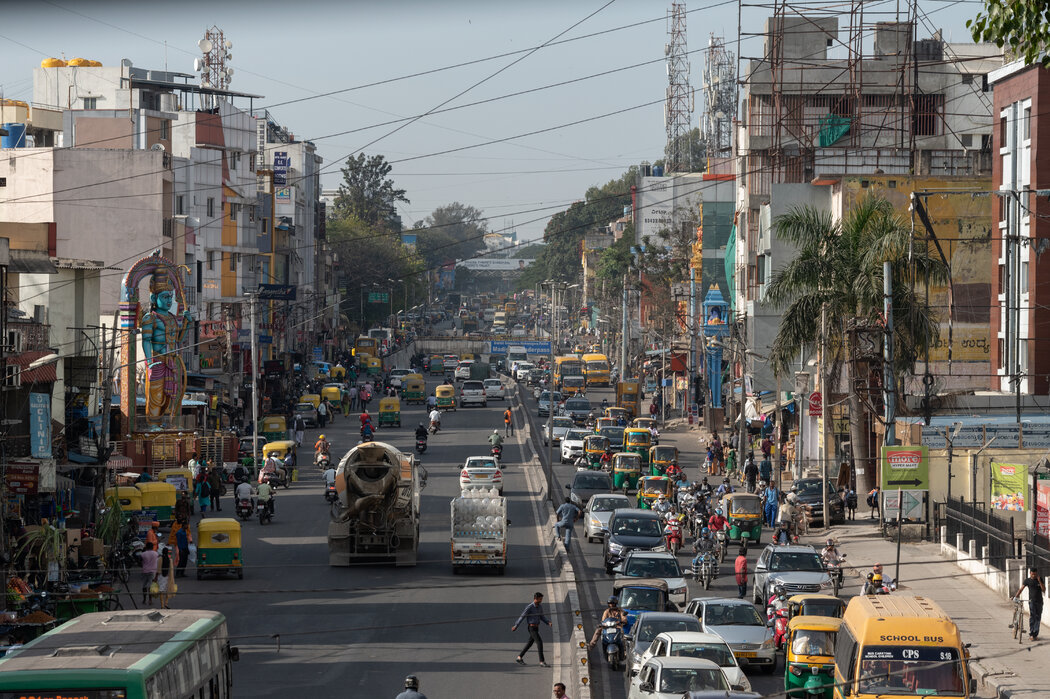
In Bengaluru, formerly known as Bangalore, a general rise in middle-class living attracted more people and more businesses that, in turn, attracted more people and businesses, continuing the cycle, Mr. Baldwin explained.
鲍德温解释说,在班加罗尔,中产阶级生活水平的普遍提高吸引了更多的人和更多的企业前往,相应地又吸引了更多的人和企业,形成循环。
Covid sped this transition, by forcing people to work remotely — from a different part of town, a different city or a different country.
新冠疫情迫使人们在城市的不同地区、不同城市或不同国家远程工作,从而加速了这个转变。
In the new model, countries can focus growth around cities rather than a particular industry. “That creates economic activities which are fairly diverse,” Mr. Baldwin said.
在这种新模式下,各国可以把增长的重点放在城市,而不是放在特定行业。“这将创造相当多样化的经济活动,”鲍德温说。
“Think Bangalore, not South China,” he said.
“考虑一下班加罗尔,而不是中国南方,”他说。
Free markets are not enough.
光靠自由市场还不够。
Many developing nations remain focused on building export-oriented industries as the path to prosperity. And that’s how it should be, said Justin Yifu Lin, dean of the Institute of New Structural Economics at Peking University.
许多发展中国家仍把重点放在建设出口导向型产业上,将其作为通往繁荣的道路。这是必由之路,北京大学新结构经济学研究院院长林毅夫说。
Pessimism about the classic development formula, he said, has been fueled by a misguided belief that the growth process was automatic: Just clear the way for the free market and the rest will take care of itself.
他说,一个错误的信念助长了对经典发展模式的悲观看法,那就是认为增长过程是自动的:只要为自由市场扫清道路,剩下的事情会水到渠成。
Countries were often pressured by the United States and the international institutions to embrace open markets and hands-off governance.
各国经常受到美国和国际机构的压力,要求它们接受开放的市场和放手式的治理。
Export-led growth in Africa and Latin America stumbled because governments failed to protect and subsidize infant industries, said Mr. Lin, a former chief economist at the World Bank.
非洲和拉丁美洲的出口导向型经济增长模式步履蹒跚,是因为政府未能保护和补贴新兴工业,曾任世界银行首席经济学家的林毅夫说。
“Industrial policy was taboo for a long time,” he said, and many of those who tried failed. But there were also success stories like China and South Korea.
“产业政策长期以来一直是禁忌,”他说,许多尝试者都失败了。但也有中国和韩国这样的成功例子。
“You need the state to help the private sector overcome market failures,” he said. “You cannot do it without industrial policy. ”
“需要国家帮助私营部门克服市场失灵的问题,”他说。“没有产业政策就无法做到这点。”

It won’t work without education.
没有教育行不通。
The overriding question is whether anything — services or manufacturing — can generate the type of growth that is desperately needed: broad based, large scale and sustainable.
最重要的问题是,服务业也好,制造业也好,是否能带来全球迫切需要的那种基础广泛、规模庞大、可持续的增长?
Service jobs for businesses are multiplying, but many offering middle and high incomes are in areas like finance and tech, which tend to require advanced skills and education levels far above what most people in developing nations have.
虽然为企业提供服务的工作岗位正在成倍增长,但许多提供中高收入的工作都在金融和技术等领域,这些领域往往需要先进的技能,以及远高于大多数发展中国家人口所拥有的教育水平。
In India, nearly half of college graduates don’t have the skills they need for these jobs, according to Wheebox, an educational testing service.
根据教育测试服务机构Wheebox的数据,印度近一半的大学毕业生不具备这些工作岗位所需的技能。
The mismatch is everywhere. The Future of Jobs report, published last year by the World Economic Forum, found that six in 10 workers will need retraining in the next three years, but the overwhelming majority won’t have access to it.
教育与工作岗位的不匹配到处可见。世界经济论坛去年发布的《就业未来》报告发现,60%的工人将在未来三年里需要接受再培训,但绝大多数人没有接受再培训的机会。
Other kinds of service jobs are proliferating, too, but many are neither well paid nor exportable. A barber in Bengaluru can’t cut your hair if you’re in Brooklyn.
其他类型的服务工作岗位也在激增,但许多岗位的报酬不高,也不能出口。班加罗尔的理发师无法给住在布鲁克林的人理发。
That could mean smaller — and more uneven — growth.
这可能意味着规模更小、更不均衡的经济增长。
Researchers at Yale University found that in India and several countries in sub-Saharan Africa, agricultural workers jumped into consumer service jobs and raised their productivity and incomes.
耶鲁大学的研究人员发现,在印度和撒哈拉以南非洲的几个国家,从事农业的人跨越到消费者服务行业后提高了他们自己的生产力和收入。

But there was a catch: The gains were “strikingly unequal” and disproportionately benefited the rich.
但这里面有一个隐藏的问题:收入的分布“极其不平等”,而且富人不成比例地受益。
With a weakening global economy, developing countries will need to wring every bit of growth they can from every corner of their economies. Industrial policy is essential, Mr. Rodrik of Harvard said, but it should focus on smaller service firms and households because that is going to be the source of most future growth.
随着全球经济增长放缓,发展中国家将需要从本国经济的各个方面获取一切可能的增长。哈佛大学的罗德里克说,虽然产业政策至关重要,但政策的重点应该放在规模较小的服务企业和家庭上,因为它们将是大部分未来经济增长的来源。
He and others caution that even so, gains are likely to be modest and hard won.
他和其他人警告称,即使如此,增长也可能是有限的,且来之不易。
“The envelope has shrunk,” he said. “How much growth we can get is definitely less than in the past.”
“经济增长的范围已经缩小,”他说。“不论我们能得到多少增长,肯定都比过去少。”
Patricia Cohen常驻伦敦,撰写与全球经济有关的新闻。
翻译:纽约时报中文网